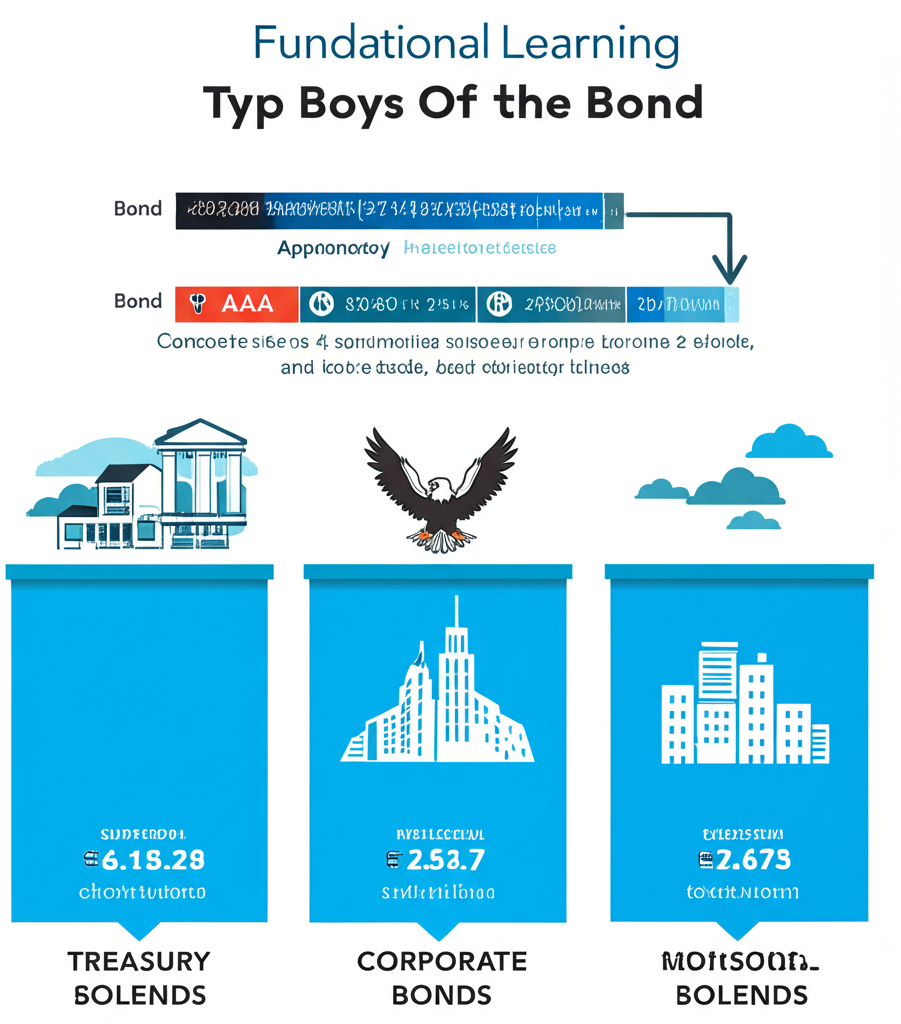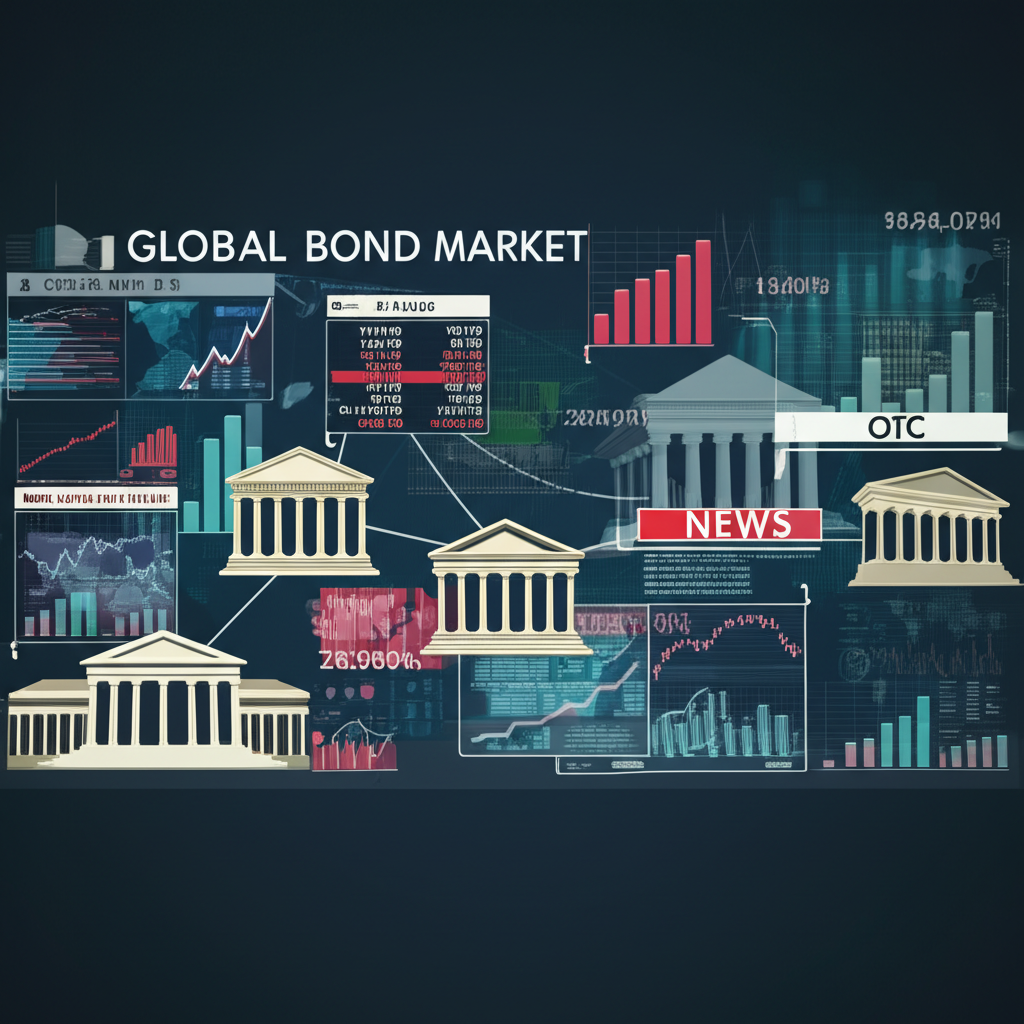Introduction: What Does “Trading in Bonds” Really Mean?

Bond trading isn’t about holding a bond until it matures—it’s about positioning yourself to profit from the market’s constant shifts. While traditional investors buy bonds for steady interest income and long-term safety, bond traders focus on short-term price movements driven by economic forces, policy changes, and market sentiment. This approach demands a deep understanding of how yields, durations, and credit conditions interact. Rather than waiting years for a payoff, traders aim to capitalize on interest rate swings, credit upgrades, or sudden shifts in investor behavior—sometimes within days or even hours. It’s a dynamic strategy that blends macroeconomic insight with technical precision. Whether you’re navigating Treasury yields or speculating on corporate debt, active bond trading requires preparation, discipline, and a clear strategy. This guide breaks down the essentials—from core concepts to real-world execution—so you can enter the fixed-income arena with confidence.
Bonds 101: The Essential Foundation for Any Trader

Before diving into trading strategies, you need a solid grasp of what bonds actually are and how they behave in the market. Bonds are debt instruments—essentially loans from investors to governments, municipalities, or corporations. When you purchase a bond, you’re lending money in exchange for periodic interest payments and the return of principal at maturity. Unlike equities, which represent ownership, bonds represent a contractual obligation to repay. But in the secondary market, these instruments are far from static. Their prices shift constantly in response to changing economic conditions, making them viable assets for active trading.
What is a Bond? A Quick Refresher
At its core, a bond is a financial IOU. The issuer—whether it’s the U.S. Treasury, a state government, or a major corporation—borrows capital and promises to pay back the face value (also called par value) on a set date. In return, the investor receives regular interest, known as the coupon payment. The maturity date can range from a few months (as in Treasury bills) to 30 years or more (like long-dated Treasury bonds). While long-term holders care mostly about the reliability of those interest payments, traders monitor how market forces affect the bond’s current price and yield. Because bond prices move inversely to interest rates, even small shifts in monetary policy can create trading opportunities.
Key Bond Characteristics That Influence Trading Decisions
For traders, success hinges on understanding the metrics that drive price volatility:
- Yield: This reflects the return on investment and comes in several forms. The current yield is the annual coupon divided by the bond’s market price. More importantly, yield to maturity (YTM) estimates total return if the bond is held until maturity, factoring in price differences from par. Traders use yield movements to anticipate price direction.
- Price: Bond prices fluctuate daily. When interest rates rise, existing bonds with lower coupons lose appeal, causing their prices to drop. Traders look to buy when yields are high (prices low) and sell when yields fall (prices rise).
- Credit Ratings: Ratings from agencies like S&P, Moody’s, and Fitch indicate an issuer’s ability to repay. A downgrade can trigger a sharp price decline, while an upgrade may boost demand. Traders often position ahead of expected rating changes.
- Duration: This measures interest rate sensitivity. A bond with a duration of 8 years will typically fall in price by about 8% for every 1% rise in rates. High-duration bonds offer greater price swings—ideal for directional bets on rate trends.
- Call/Put Features: Callable bonds allow the issuer to repay early, which can hurt investors if rates fall. Putable bonds give the holder the right to sell back the bond. These features affect pricing and must be factored into trading decisions.
Understanding Different Types of Bonds for Trading
The bond market is vast and varied, offering distinct opportunities depending on your risk appetite and strategy:
- Government Bonds (Treasuries): Issued by national governments, these are among the most liquid and widely traded. U.S. Treasuries, in particular, serve as a benchmark for global interest rates and are central to yield curve strategies. Their high liquidity makes them ideal for active trading.
- Corporate Bonds: Offered by companies, these carry higher credit risk but also higher yields. Prices react strongly to earnings reports, industry trends, and broader economic data. Investment-grade bonds are relatively stable, while high-yield issues can be volatile.
- Municipal Bonds (“Munis”): Issued by state and local governments, these often provide tax-exempt interest, appealing to high-income investors. However, liquidity varies widely—some municipal bonds trade infrequently, making them less suitable for rapid trading unless a clear arbitrage opportunity arises.
- High-Yield Bonds (“Junk Bonds”): Rated below investment grade, these bonds compensate for increased default risk with higher yields. They behave more like equities during market stress, making them useful for traders who can assess credit fundamentals and macroeconomic trends.
The Bond Market: Where Trading Happens

Unlike stocks, which trade on centralized exchanges like the NYSE or Nasdaq, the bond market operates primarily over-the-counter (OTC). This decentralized structure means transactions occur directly between buyers and sellers—often through broker-dealers—rather than on a public order book. While this reduces transparency, it also creates inefficiencies that skilled traders can exploit. Understanding how this market functions—and what drives it—is essential for timely and profitable trades.
Primary vs. Secondary Markets: Buying and Selling Bonds
Bonds enter the financial system through the **primary market**, where new issues are sold to raise capital. Governments auction Treasuries, while corporations work with investment banks to underwrite bond offerings. Once issued, these bonds move to the **secondary market**, where investors trade them among themselves. This is where active trading takes place. Prices here are determined by supply and demand, shaped by interest rate expectations, inflation data, and credit outlooks. The secondary market’s depth and liquidity are critical—especially for traders who need to enter and exit positions quickly without moving the market too much.
Factors Influencing Bond Prices and Yields in Real-Time
Bond values don’t exist in a vacuum. They respond to a complex web of macroeconomic and market-driven forces:
- Interest Rates: Central bank policy is the single biggest driver. When the Federal Reserve raises rates, newly issued bonds offer higher yields, making older, lower-yielding bonds less attractive. Their prices fall accordingly. Traders closely watch the Federal Reserve’s FOMC calendar and statements for clues about future rate moves.
- Inflation: Rising inflation erodes the real value of fixed interest payments. As inflation expectations climb, investors demand higher yields, pushing bond prices down. This makes inflation data like the CPI and PCE index critical for traders.
- Economic Data: Reports on GDP growth, employment, retail sales, and manufacturing activity shape expectations about future interest rates. Strong economic numbers may signal tighter monetary policy, which is typically negative for bond prices.
- Central Bank Policy: Beyond rate decisions, central bank communication—such as forward guidance or shifts in asset purchase programs—can move markets. Quantitative tightening, for example, reduces demand for bonds, often leading to higher yields.
- Credit Events: For corporate and municipal bonds, news about financial health, restructuring, or rating changes can cause sharp price swings. Geopolitical tensions may also trigger a “flight to quality,” boosting demand for safe-haven assets like U.S. Treasuries.
How to Trade Bonds: Your Practical Step-by-Step Guide

Knowing the theory is one thing—executing real trades is another. Active bond trading requires access to the right tools, an understanding of market mechanics, and familiarity with execution methods.
Choosing the Right Platform: Brokers and Direct Options
Most individual traders access the bond market through brokerage platforms. Not all brokers are created equal when it comes to fixed-income trading:
- Full-Service Brokers: These firms provide research, portfolio management, and access to less liquid or institutional-grade bonds. However, their fees are typically higher, which can eat into profits for frequent traders.
- Online Discount Brokers: Platforms like Fidelity, Charles Schwab, and Interactive Brokers offer robust bond marketplaces with real-time quotes, research tools, and competitive pricing. They support trading in Treasuries, corporates, and munis, making them ideal for active traders focused on liquidity and cost-efficiency.
- Direct Options (e.g., TreasuryDirect): While you can buy U.S. Treasuries directly from the government via TreasuryDirect, this method is designed for long-term investors, not active traders. It lacks secondary market functionality, limiting your ability to sell before maturity.
When evaluating a platform, prioritize those with transparent pricing, access to real-time yield data, and strong support for limit orders and bond analytics.
Executing a Bond Trade: Bids, Asks, and Market Orders
Bond trading revolves around three key pricing concepts:
- Bid Price: The highest price a buyer is willing to pay.
- Ask Price (Offer Price): The lowest price a seller is willing to accept.
- Bid-Ask Spread: The difference between the two, which represents the dealer’s margin and a direct cost to the trader.
When you buy, you pay the ask; when you sell, you receive the bid. Because many individual bonds trade infrequently, spreads can be wide—especially for less common issues. To avoid poor fills, traders often use limit orders to specify their acceptable price. Market orders, while faster, can lead to unfavorable execution in illiquid markets.
Understanding Bond Pricing Conventions for Traders
Bond pricing has its own language, and misunderstanding it can lead to costly errors:
- Clean Price: The quoted price of the bond, excluding accrued interest. This is the number you see on your trading platform, typically expressed as a percentage of par (e.g., 98.50 means $985 for a $1,000 bond).
- Accrued Interest: Since interest is paid semi-annually, buyers must reimburse sellers for the interest earned since the last coupon date. This amount is calculated based on the number of days held.
- Dirty Price (Full Price): The total amount you actually pay—clean price plus accrued interest. This is crucial for calculating true cost basis and net returns.
For example, if you buy a bond with a clean price of $990 and $15 in accrued interest, your total outlay is $1,005. Getting this wrong can distort your profit calculations.
Bond Trading Strategies for Different Market Conditions
Successful bond traders don’t just react to the market—they anticipate it. By applying structured strategies, they turn economic trends into profit opportunities.
Active vs. Passive Bond Trading: Which Approach Suits You?
Passive investing means buying bonds and holding them to maturity, focusing on income and capital preservation. Active trading, on the other hand, involves frequent buying and selling to capture price movements. This might include rotating between sectors, adjusting duration exposure, or using derivatives. Active trading requires more time, research, and emotional discipline, but it opens the door to returns beyond coupon income.
Yield Curve Strategies: Betting on Interest Rate Changes
The yield curve—plotting bond yields against maturities—reveals market expectations about future rates and economic growth. Traders use its shape to guide positioning:
- Steepeners: A bet that long-term rates will rise faster than short-term rates (or that short-term rates will fall). Traders might buy short-dated bonds and sell long-dated ones, profiting as the curve steepens.
- Flatteners: The opposite play—expecting the yield curve to flatten due to rising short-term rates or falling long-term yields. This could involve selling short-term Treasuries and buying long-term ones.
- Butterfly Trades: A more advanced strategy that targets the curvature of the yield curve. By going long in both short and long maturities while shorting intermediate bonds (or vice versa), traders profit from changes in the curve’s shape. These are often executed using futures or ETFs for efficiency.
Credit Spread Trading: Capitalizing on Perceived Risk
Credit spreads—the difference in yield between a corporate bond and a Treasury of similar maturity—reflect market sentiment about credit risk. Traders can profit from expected changes:
- If a company is expected to strengthen financially, its credit spread may narrow. A trader could buy the corporate bond and short a Treasury, benefiting from the relative outperformance.
- If a downgrade seems likely, the spread may widen. The trader might short the corporate bond and go long the Treasury, hedging against broader rate moves while betting on deteriorating credit.
This strategy requires strong fundamental analysis and an understanding of sector dynamics.
Arbitrage and Relative Value Trades in the Bond Market
Arbitrage involves exploiting temporary pricing inefficiencies. For example, if the same bond trades at slightly different prices on two platforms, a trader can buy low and sell high simultaneously. While pure arbitrage opportunities are rare and often fleeting, relative value trades are more common. These involve comparing similar bonds—such as two corporate issues in the same sector—and betting on convergence or divergence in their spreads. These strategies thrive in inefficient or fragmented markets and require fast execution and sophisticated analytics.
Short-Term Trading Tactics and Day Trading Bonds
While less common than stock day trading, short-term bond trading is possible—especially with highly liquid instruments. Traders focus on U.S. Treasuries, Treasury futures, or bond ETFs like TLT or LQD, which offer tight spreads and real-time pricing. Opportunities arise from economic data releases, Fed announcements, or sudden shifts in market sentiment. The challenge lies in generating meaningful returns from small price movements, which demands large positions and low transaction costs. Additionally, the OTC nature of many bond markets limits transparency, making it harder to assess true liquidity.
Is Trading Bonds Profitable? Setting Realistic Expectations
Bond trading can generate strong returns, but it’s not a guaranteed path to wealth. Success depends on skill, timing, and risk control.
Understanding Potential Returns and Income Streams
Traders profit in two main ways:
- Coupon Income: While active traders may not hold bonds long enough to collect multiple coupons, they do earn accrued interest for the days they own the bond. This adds to total return but is secondary to capital gains.
- Capital Gains: The primary profit source. By buying low and selling high—often due to falling rates, improving credit, or successful strategy execution—traders realize gains. For example, a 2% drop in yields on a bond with a duration of 7 could result in a ~14% price increase.
Total return combines both, but capital gains dominate in active strategies.
The Costs of Trading: Fees, Spreads, and Bid-Ask Difference
Transaction costs can quietly erode profits:
- Brokerage Commissions/Markups: Some brokers charge per trade; others embed a markup in the bond price. Always check how you’re being charged.
- Bid-Ask Spread: This is often the largest cost, especially for less liquid bonds. A 0.5% spread means you need the bond to move half a point just to break even.
- Slippage: In fast-moving markets, your order may fill at a worse price than expected, particularly if liquidity is thin.
Frequent traders must target returns that clearly exceed these costs.
Tax Implications of Active Bond Trading
Taxes play a major role in net profitability:
- Coupon Income: Treated as ordinary income and taxed at your marginal rate. Municipal bond interest is often exempt from federal tax and sometimes state and local taxes, depending on residency.
- Capital Gains: Short-term gains (on bonds held less than a year) are taxed as ordinary income. Long-term gains (held over a year) benefit from lower tax rates. Capital losses can offset gains and up to $3,000 of ordinary income annually.
Because active trading often generates short-term gains, tax efficiency becomes a key consideration. Consult a tax advisor to structure your activity wisely. The IRS, capital gains and losses page provides essential guidance.
Risks of Trading Bonds and How to Manage Them
Bonds are often seen as safe, but active trading introduces significant risk exposure.
Core Bond Risks Revisited for Traders
Traders face amplified versions of traditional bond risks:
- Interest Rate Risk (Duration): The biggest threat. When rates rise, bond prices fall. Traders manage this by adjusting portfolio duration—shortening it when hikes are expected, lengthening it when cuts are on the horizon.
- Credit Risk: The chance that an issuer defaults. This is especially relevant for high-yield bonds. A single downgrade can wipe out weeks of gains.
- Inflation Risk: Rising inflation diminishes the real value of fixed payments, prompting investors to demand higher yields—hurting bond prices.
- Liquidity Risk: Many bonds, especially municipal or niche corporate issues, trade infrequently. Selling quickly may require accepting a steep discount.
- Reinvestment Risk: When coupons or maturing bonds are reinvested at lower rates, returns suffer. This is a concern in declining rate environments.
Risk Management Techniques for Bond Traders
Long-term success depends on protecting capital:
- Position Sizing: Limit exposure to any single bond or sector. A common rule is to risk no more than 1-2% of your trading capital on a single position.
- Stop-Loss Orders: While not always available for individual bonds, they work well with ETFs and futures. Conceptually, traders should always define their exit point before entering a trade.
- Diversification: Spread risk across issuers, maturities, and sectors. However, active traders often concentrate to exploit specific opportunities—so diversification must be balanced with conviction.
- Monitoring Economic Indicators: Stay ahead of data releases and central bank communications. Tools like Bloomberg’s Bond Markets section deliver real-time insights.
- Scenario Analysis: Test your portfolio against hypothetical events—like a sudden rate hike or credit shock—to understand potential losses and refine your strategy.
Conclusion: Navigating the Bond Trading Landscape
Bond trading offers a sophisticated alternative to passive income investing, allowing active participants to profit from macroeconomic shifts, credit dynamics, and market inefficiencies. It’s not simply about buying safe assets—it’s about timing, positioning, and managing risk in a complex, ever-changing environment. From yield curve plays to credit spread trades, the opportunities are real but demand expertise, discipline, and a clear methodology. While the barrier to entry is lower than ever thanks to advanced brokerage platforms, the margin for error remains tight. Profitability isn’t guaranteed, but with the right knowledge, realistic expectations, and a commitment to continuous learning, bond trading can become a powerful component of an active investor’s toolkit.
How do you actively trade bonds on the secondary market?
Actively trading bonds on the secondary market involves buying and selling existing bonds through a brokerage platform to profit from price fluctuations. Traders analyze interest rate trends, economic data, and credit events to anticipate price movements, using strategies like yield curve trades or credit spread trading. Execution typically occurs via online brokerage accounts offering access to the fixed-income marketplace.
What are the key differences between trading and long-term investing in bonds?
The primary difference lies in the objective and holding period. Long-term bond investing focuses on holding bonds to maturity for steady income and capital preservation. Trading in bonds, conversely, involves frequent buying and selling to capitalize on short-term price movements, prioritizing capital gains over consistent coupon income. Traders are more concerned with duration and short-term interest rate volatility.
Is it possible to make a significant profit from trading bonds, and what are the associated risks?
Yes, it is possible to make significant profits from trading bonds, particularly through well-executed strategies that leverage interest rate changes or credit events. However, this comes with risks such as:
- Interest Rate Risk: Bond prices move inversely to interest rates.
- Credit Risk: The risk of issuer default.
- Liquidity Risk: Difficulty selling bonds quickly at a fair price.
- Inflation Risk: Erosion of purchasing power of bond payments.
Success depends heavily on market analysis, timely execution, and robust risk management.
Which types of bonds are most commonly traded by individual investors, and why?
Individual investors most commonly trade U.S. Treasury bonds, notes, and bills due to their high liquidity and perceived safety. Corporate bonds are also popular for their higher yields and sensitivity to company-specific news. Municipal bonds are traded, but often by high-net-worth individuals seeking tax-exempt income, and their liquidity can be lower.
What platforms or brokers offer the best tools and access for trading bonds?
Major online discount brokers like Fidelity, Charles Schwab, and Interactive Brokers are often recommended. They provide extensive fixed-income marketplaces, real-time bond quotes, research tools, and competitive fee structures. Look for platforms with transparent pricing and access to a wide range of bond types.
Can bond trading be profitable in a rising interest rate environment?
Yes, bond trading can be profitable in a rising interest rate environment. Traders can profit by:
- Shorting bonds (selling borrowed bonds with the expectation of buying them back cheaper).
- Focusing on shorter-duration bonds, which are less sensitive to rate hikes.
- Employing yield curve flattening strategies.
- Investing in floating-rate bonds or bond ETFs that adjust to higher rates.
It requires adjusting strategies to suit the prevailing market conditions.
How does bond duration influence a bond trader’s strategy?
Bond duration is crucial for traders as it measures a bond’s price sensitivity to interest rate changes. A bond with a higher duration will experience a larger price drop when rates rise and a larger price increase when rates fall. Traders use duration to:
- Gauge interest rate risk exposure.
- Position their portfolios to benefit from anticipated rate movements (e.g., increasing duration if rates are expected to fall).
- Execute yield curve strategies.
What are some common bond trading strategies for beginners to consider?
Beginners should start with simpler strategies, such as:
- Interest Rate Speculation: Buying bonds when interest rates are expected to fall (prices rise) and selling when rates are expected to rise (prices fall).
- Laddering: Though more investment-oriented, it introduces managing maturities.
- Bond ETFs: Trading bond exchange-traded funds (ETFs) can offer diversification and liquidity, simplifying exposure to bond market movements without trading individual bonds.
Gradually explore more complex strategies like credit spread or yield curve trades as experience grows.
Do bond prices fluctuate enough for active day trading, and what are the challenges?
While less volatile than stocks, highly liquid bonds, especially U.S. Treasuries or highly traded bond ETFs, can fluctuate enough for day trading. However, challenges include:
- Smaller Price Movements: Requires larger capital to generate meaningful profits.
- Wider Spreads: The bid-ask spread can be a significant cost for frequent trades.
- Less Transparency: The OTC nature of the bond market can make real-time pricing and liquidity harder to assess for individual bonds.
It’s generally more challenging and less common than stock day trading.
How does credit rating impact the tradability and risk of a bond?
Credit ratings significantly impact a bond’s tradability and risk. Higher-rated (investment-grade) bonds are generally more liquid and carry lower default risk, making them attractive for conservative traders. Lower-rated (high-yield or “junk”) bonds offer higher yields to compensate for greater credit risk and are more volatile. Traders often use credit ratings as a primary factor in credit spread strategies, betting on changes in an issuer’s perceived creditworthiness.

留言